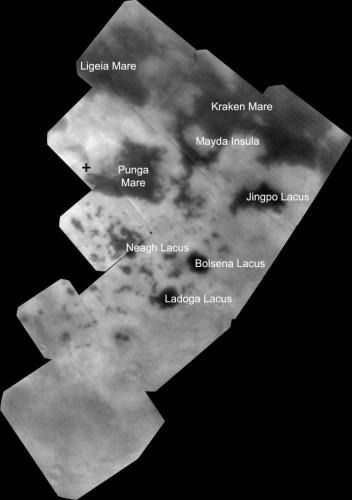Pics of Saturn's moon Titan show lakes and other surface features
Titan is the largest moon orbiting the planet Saturn in our own solar system. Titan is one of the most interesting celestial bodies in our solar system. Last summer, the weather on Titan cleared long enough to allow the orbiting NASA Cassini spacecraft to take some interesting photographs and beam them back to earth for astronomers and scientists to check out.
The clear weather allowed Cassini to take some photographs of giant lakes and what appear to be salt flats on the surface of the frozen moon. These lakes aren't made of water as they would be here on Earth, but are filled with liquid methane and ethane. Scientists don't yet know why, but most of the lakes on the surface of Titan are near the north pole of the moon.

This area is typically covered in a type of smog and the lack of that smog allowed NASA to snap some of the best images yet of the lakes on the surface of Saturn's largest moon.
Scientists Linda Spilker said:
Titan's northern lakes region is one of the most Earth-like and intriguing in the solar system. We know lakes here change with the seasons, and Cassini's long mission at Saturn gives us the opportunity to watch the seasons change at Titan, too. Now that the sun is shining in the north and we have these wonderful views, we can begin to compare the different data sets and tease out what Titan's lakes are doing near the north pole.
The colors in the images you see here are false colors, not the actual color of the surface of Titan. These images also unveiled bright areas that appear to be unique to the northern hemisphere of Titan that have never before been seen. The images also unveiled orange colored terrain surrounding the massive lakes that researchers believe could be salt flats made of organic material.
SOURCE: National Geographic
